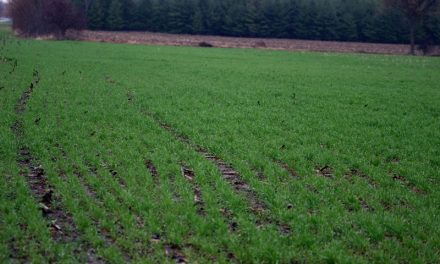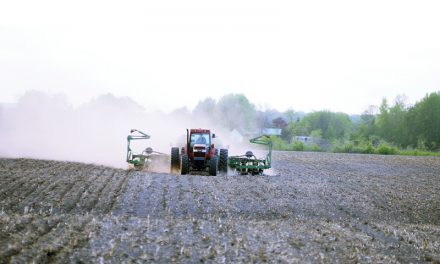“Making the soil great again” was discussed by Alan Kruszel, past chairman of Soil Conservation Council of Canada, at the World Soil Day event. Al-Rajab photo

Al-Rajab photo
OTTAWA – To mark World Soil Day, the Ontario Ministry of Agriculture, Food and Rural Affairs (OMAFRA) organized a seminar at the Canada Agriculture and Food Museum on Dec. 5, 2019. The event gathered people interested in farming, food and climate; kids even joined the event with their families to learn about soil.
Two scientific presentations were made and soil samples, posters, and some educative materials were on hand.
The first presentation entitled, “Let’s talk about soil,” was given by Alan Kruszel, past chairman of the Soil Conservation Council of Canada. Kruszel talked about the importance of soil biology to help the cycling of carbon and nutrients, to build organic matter, to improve soil structure, to hold and filter water, to reduce runoff and leaching of nutrients, and to reduce erosion. He recommends stopping soil tilling, which destroys the mycorrhizae and alters microbiological communities; it also breaks apart soil aggregates, leads to an increase in soil erosion and nutrient loss, and decreases soil organic matter.
“Make the soil great again by eliminating tillage, leave residues, plant cover crops, and keep soil covered with something living,” Kruszel explained.
The second presentation was given by Sebastian Belliard, soil management specialist at OMAFRA. The presentation focused on the soil cover index. A performance index is a statistical snapshot of a set of variables used to show the current state and to track changes over time. Agriculture and Agri-Food Canada has developed performance indices that assign single values to the indicator results. By statically converting the indicator map to a single value from 0 to 100 for each year, we can assess whether the indicator has improved or declined over time.
OMAFRA recommends fall cover crops to reduce soil erosion. Fall harvest offers a number of opportunities to plant cover crops. Use cover crops to keep soil covered and prevent erosion over the winter after low residue crops like soybeans, silage corn, edible beans and field vegetables. For instance, red clover is a great cover crop option when frost-seeded into wheat or other small grains. Red clover builds better soil structure, adds diversity and provides feed, contributes as much as 80 kg/ha to succeeding crops, and builds yield potential while maintaining soil health.













